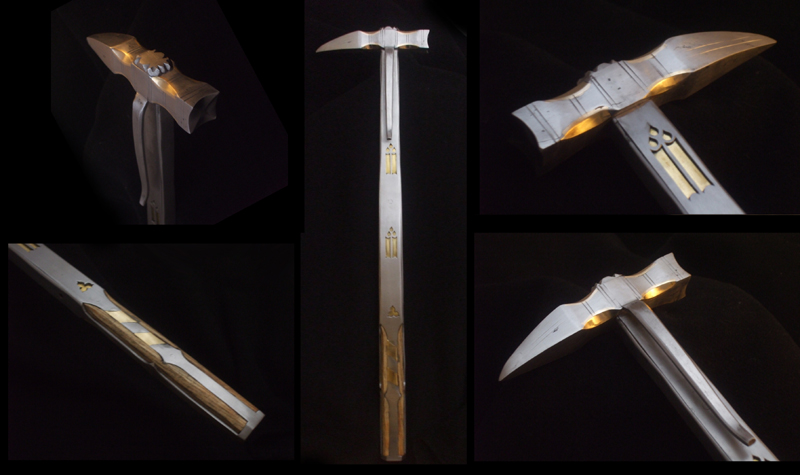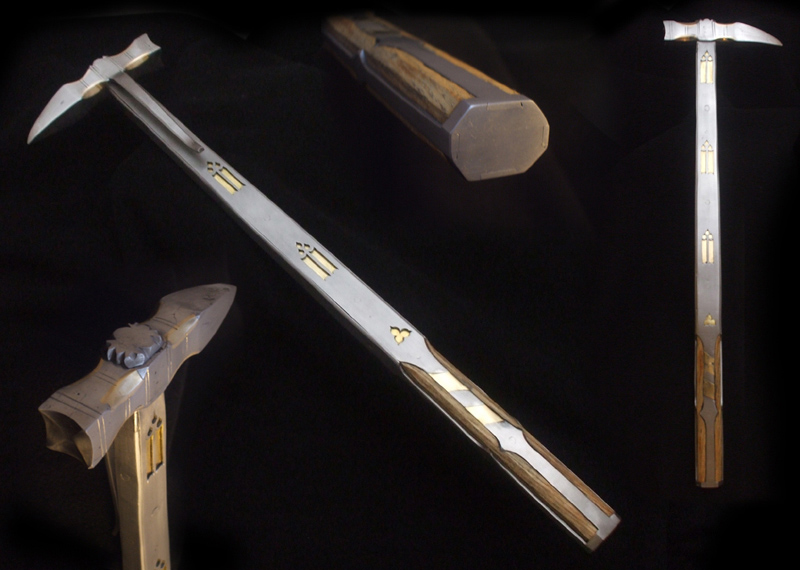Here's a piece I finished very recently, which was presented at the Pontoise History Market last week - and didn't find an owner.
Three main inspirational examples behind it, one being kept in the storage rooms of the Royal Armouries in Leeds (for the head shape and overall construction of the hammer, dated early XVIth century even though I do believe such types are earlier), the other being on display at the Chicago Art Institute (for the decorations and inlays, especially on the head - George F. Harding Collection, 1982.2122, dated first third of XVIth century), and a very nice and elegant piece kept in Rothenburg (for the shape of the cuts in the steel bands, dated late XVth century).
The head itself was made using old, pre-Bessemer iron (ie at least 150 years old). Carbon steel (1075) was forge-welded in the cut-open beak to provide a hard point, exactly like what was done "back then" (you can see the faint weld lines on the pictures) : the idea is as always to keep hard but expensive steel where it's needed the most, and use cheaper and softer iron elsewhere.
Brass was inlaid in recesses filed in the "corners" of the waisted sections between beak, hammer end and central part following the example set by the Chicago hammer.
The oak core is surrounded on all sides by mild steel bands tapering towards the head (the taper was forged in) : the mild steel plate at its end is kept in place by the bands themselves, hammered in dovetailed grooves. On the left and right side of the haft, the bands fit in grooves cut in the wood.
The side bands bear decorative cuts showing polished brass plating underneath, shaped in a delicate "Gothic window" form similar to the Rothenburg hammer. The brass inlays on the grip echo those found on the Chicago hammer - note than on the right side of it, the plates were brought forward as the band warped during the assembly of the hammer, and I had to find a solution (that wouldn't have been unused 'back then') to have them stay in place (especially the bottom plate) ; I believe such "imperfections" add character to the piece, as they're far from unknown on original examples.
The clip is hand-shaped (hammer and file) mild steel made after the Chicago hammer, as I found it far more elegant than the Leeds example.
The overall dimensons are 52.3 cm (length), 13.4 cm (head) and about 925 grams (weight) - wich makes it lighter than the Chicago hammer.
If you're interested in it, please PM me...

